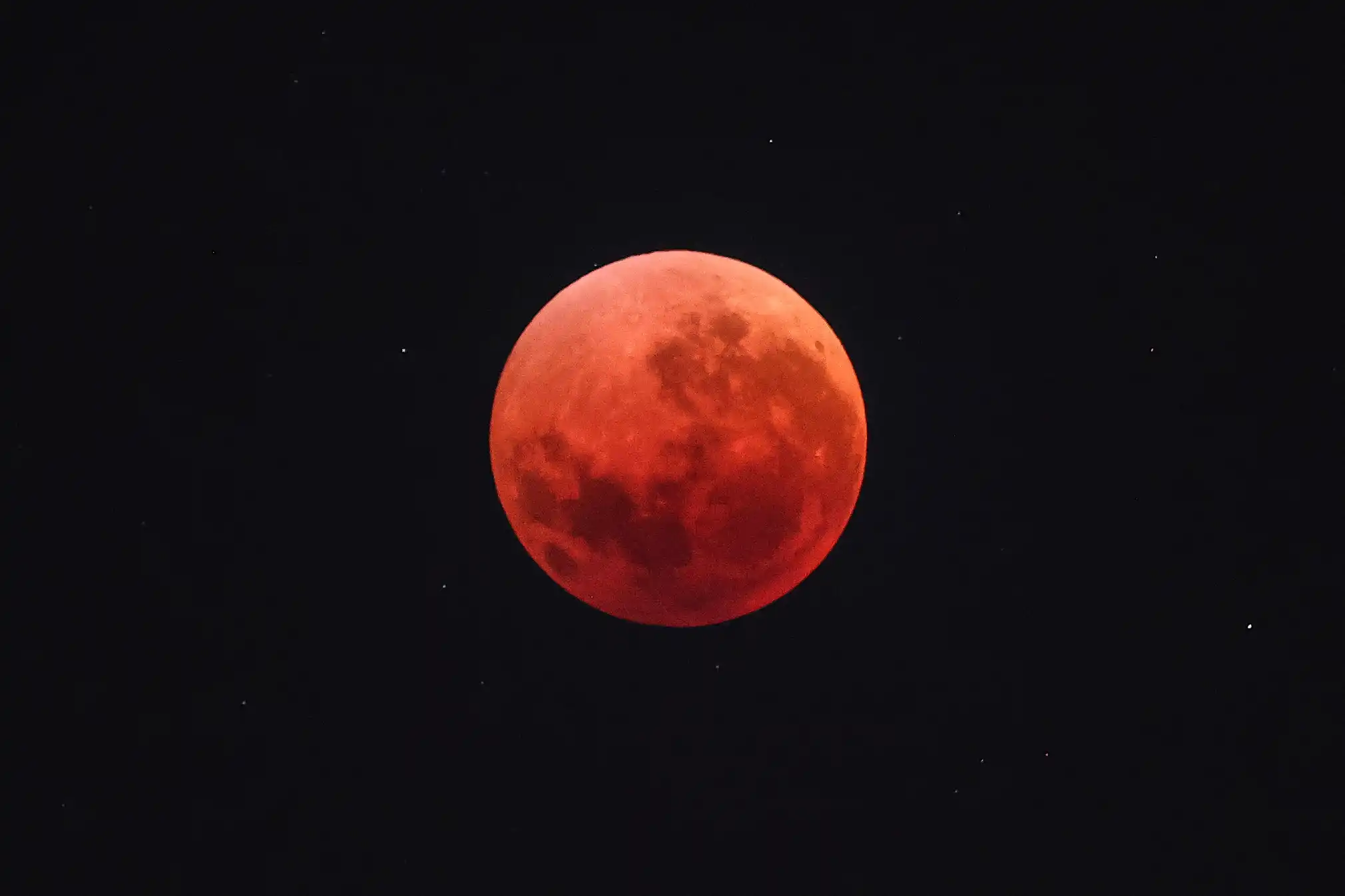
Luna Eclipse "Blood Moon" total lunar eclipse visible on Sunday, 07 September 2025. Image: The Guardian.
(The Post News)- South African sky gazers were treated to a rare total lunar eclipse, commonly known as a “Blood Moon,” which painted the night sky with hues of fiery red on Sunday, 07 September 2025. According to the National Research Foundation (NRF), the event was the longest total lunar eclipse in recent times, offering an unmissable spectacle for sky enthusiasts.
The South Africa Agency for Science and Technology Advancement (SAASTA), a business unit of the NRF, reported on a total lunar eclipse’s visibility. “In Cape Town, the partial phase began by moonrise at 6:24pm SAST, with totality lasting from 7:30pm to 8:52pm and peaking at 8:11pm. In Johannesburg, the timings were essentially the same, with moonrise at 5:49pm, totality from 7:30pm to 8:52pm, and maximum eclipse occurring at 8:11pm,” they said.
SAASTA noted that there was no need for eye protection, unlike a solar eclipse—a small telescope or binoculars would have improved the view. They advised stabilizing the phone or camera, tap-focusing on the moon, adjusting the exposure slightly, and experimenting with a short-to-moderate zoom for pictures.
Scientific Definition of the Lunar Eclipse
Scientifically, a lunar eclipse occurs when the Earth passes directly between the Sun and the Moon, casting its shadow across the Moon. As a result, the Moon grows dim and often transforms into a striking shade of red or orange, a phenomenon caused by sunlight bending and scattering through Earth’s atmosphere, much like the glow of a sunset.
For a lunar eclipse to occur, the Sun, Earth, and Moon must align in a straight line, with Earth positioned in the middle. As the Moon orbits Earth, it slips into Earth’s shadow. Direct sunlight that normally brightens the lunar surface is blocked, plunging the Moon into darkness. Only the filtered rays refracted through Earth’s atmosphere reach it, painting the Moon in its iconic “blood moon” colors.
In an interview with CapeTalk, Science Engagement Astronomer at the South African Astronomical Observatory, Daniel Cunnama, explained that lunar eclipses occur fairly often, more frequently than solar eclipses, with one happening roughly every 18 months to two years. “Think of a sunset or a sunrise; the sun is passing through the atmosphere, and quite a lot of atmosphere, so when the sun is directly above, it only has to pass through less than 100 kilometers of atmosphere,” he said.
Cunnama added that when “it is very low to the horizon, it has to pass through much more atmosphere, and what that means is that the light from the sun scatters. It scatters a lot more and appears redder. That is why the sunsets and the sunrises are red.
“And what is happening for the moon is if you were sitting on the moon, during a lunar eclipse, you would see, essentially, a sunset all around the Earth. There is this red light passing through our atmosphere and then projected onto the moon, making it red,” Cunnama said.
Lunar Eclipse in African Culture
Traditional leader and healer Mpatametse Mokgoadi explained that in African culture, lunar eclipses carry a deep symbolic meaning.
He said that it is believed that a red moon portends severe winds and possible illnesses caused by these abrupt, powerful gusts of wind. On the other hand, a red moon may also portend a bountiful harvest, which would benefit farming communities.
Myths and the Magic of the Lunar Eclipse
While astronomers celebrate lunar eclipses as natural wonders, they have long stirred myths, fears, and cultural traditions across the globe. Some people took to social media that lunar eclipses are often seen as bad omens. Prophet Malcolm Kaitano said in a post on Facebook, “Do not sleep without praying; a strong spirit of death has been released tonight.”
Kaitano cited that the lunar eclipse is not a decoration, but it is a sign. “If you have seen the blood moon, pray, and with those little babies, anoint them before midnight,” he said.
Among the most common myths is the belief that pregnant women should stay indoors during a lunar eclipse, avoid sharp objects, or refrain from eating to protect their unborn child. Medical experts confirm there is no scientific link between eclipses and pregnancy complications.
Another widespread superstition is that eclipses are signs of bad luck, often associated with misfortune or instability. Scientists stress, however, that lunar eclipses are predictable astronomical events with no influence on human affairs. The sense of foreboding stems from folklore and fear of the unknown.
There is also a misconception that watching a lunar eclipse can damage eyesight, similar to a solar eclipse.



